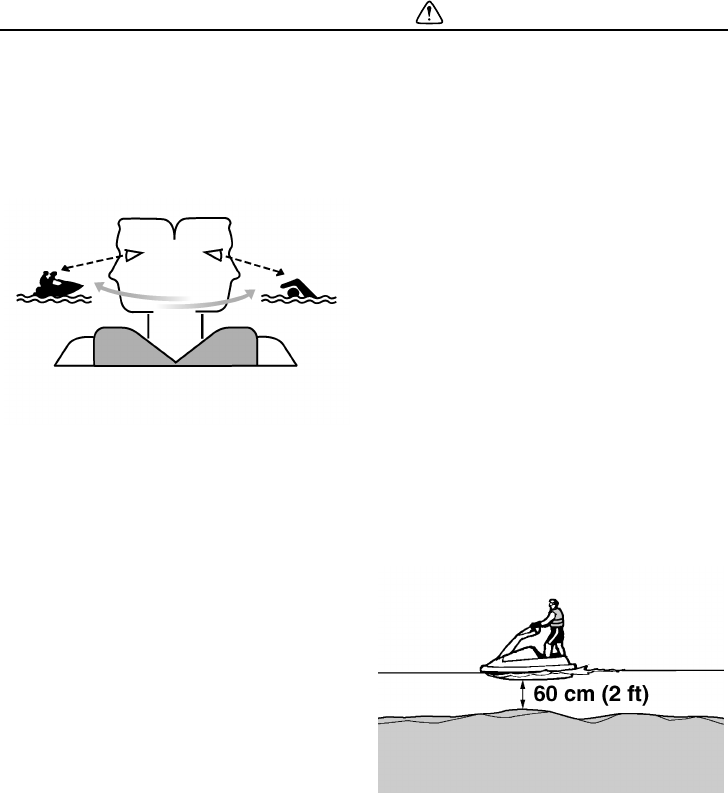
Safety information
8
EJU30761
Cruising limitations
● Scan constantly for people, objects, and
other watercraft. Be alert for conditions that
limit your visibility or block your vision of
others.
● Operate defensively at safe speeds and
keep a safe distance away from people, ob-
jects, and other watercraft.
● Do not follow directly behind watercraft or
other boats.
● Do not go near others to spray or splash
them with water.
● Avoid sharp turns or other maneuvers that
make it hard for others to avoid you or un-
derstand where you are going.
● Avoid areas with submerged objects or
shallow water.
● Take early action to avoid collisions. Re-
member, watercraft and other boats do not
have brakes.
● Do not release the throttle lever when trying
to steer away from objects—you need throt-
tle to steer. Always check throttle and steer-
ing controls before starting the watercraft.
● Ride within your limits and avoid aggressive
maneuvers to reduce the risk of loss of con-
trol, ejection, and collision.
● This is a high performance boat—not a toy.
Sharp turns or jumping wakes or waves can
increase the risk of back/spinal injury (pa-
ralysis), facial injuries, and broken legs, an-
kles, and other bones. Do not jump wakes
or waves.
● Do not operate the watercraft in rough wa-
ter, bad weather, or when visibility is poor;
this may lead to an accident causing injury
or death. Be alert to the possibility of ad-
verse weather. Take note of weather fore-
casts and the prevailing weather conditions
before setting out on your watercraft.
● As with any water sport, you should not op-
erate your watercraft without someone else
nearby. If you operate further than swim-
ming distance from shore, you should be
accompanied by another boat or watercraft,
but make sure you stay a safe distance
away. It’s good, common sense.
● Never operate in water that is less than 60
cm (2 ft) deep from the bottom of the water-
craft, otherwise you increase your chance
of hitting a submerged object, which could
result in injury.
● This watercraft is not equipped with lighting
required for night operation. Do not operate
the watercraft after sunset or before dawn,
otherwise you increase the risk of colliding
UF2F12E0.book Page 8 Tuesday, July 14, 2009 3:07 PM


















